Part1
Throughout the course, I have a deep understanding of distributed and open education. I am touched that we, who are in the epidemic, can get the usual education even at home. Through Jordan, K. & Weller, M.’s Openness and Education: A beginners’ guide. and Major, Clair Howell’s Teaching Online – A Guide to Theory, Research, and Practice. In these two articles, I know the original The open education we get is based on the Internet. Because of advanced technology, teachers can present different classrooms in different ways. Even if you are in front of the computer, you can still feel the effects of being there. Plus, in addition to software like zoom, PPT and so on. It turns out that social media can also connect to education. This also gave me a different perspective on distributed and open education. In addition, written by Wiley and Hilton, and in “Design Principles of Indigenous Learning Spaces”, I think distributed and open education has brought more opportunities for these special groups to learn. Education itself requires us to invest a lot of funds. In order to allow more people to receive education, open education makes education equal. At the same time, open education allows students to become more creative and improve their interactive ability.
Jordan, K. & Weller, M. (2017) Openness and Education: A beginners’ guide. Global OER Graduate Network.
Major, Clair Howell. (2015). Teaching Online – A Guide to Theory, Research, and Practice. Johns Hopkins University Press. Retrieved from http://ebookcentral.proquest.com/lib/uvic/detail.action?docID=3318874 (p. 10)
Kral, I. & Schwab, R.G. (2012). Chapter 4: Design Principles for Indigenous Learning Spaces. Safe Learning Spaces. Youth, Literacy and New Media in Remote Indigenous Australia. ANU Press. http://doi.org/10.22459/LS.08.2012
Topic 1 post link: https://zhiqingye.opened.ca/topic-1/
Quote: “When we interact with a group of students via streaming video, the interaction is nevertheless face-to-face.” Morris, S. M., & Stommel, J. (2018).
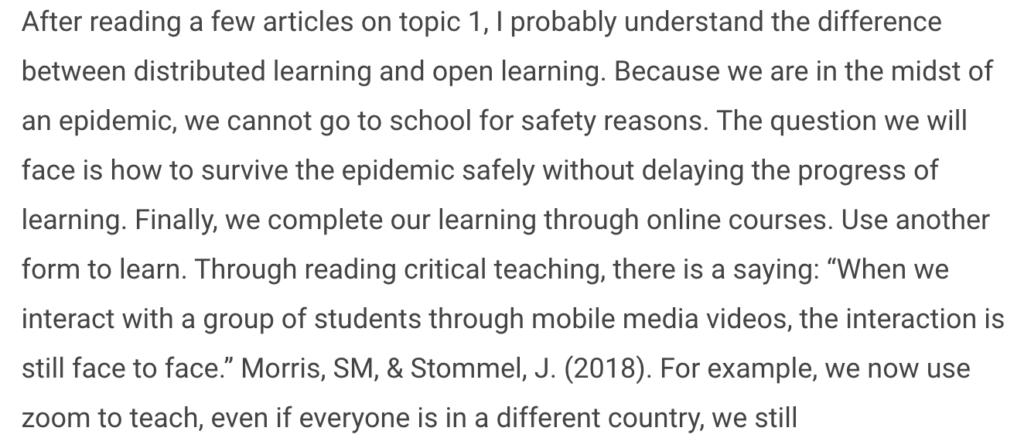
Quote:”students have time to reflect and respond thoughtfully.” Vaughan, N. D., Garrison, D. R., & Cleveland-Innes, M. (2013).
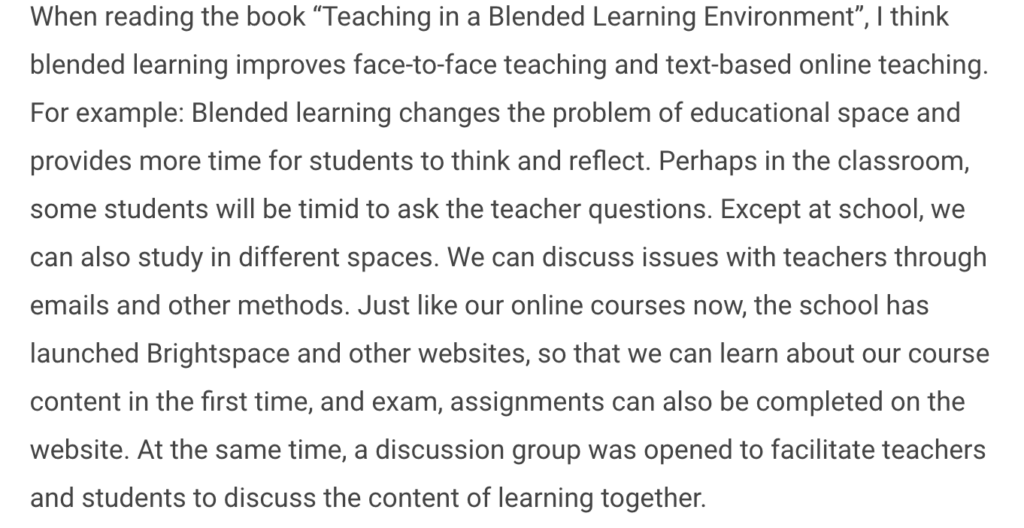
Topic 2 link: https://zhiqingye.opened.ca/topic-2/
Quote:” Thus technology creates the digital microcosm that is the course itself.” Major, Clair Howell. (2015).
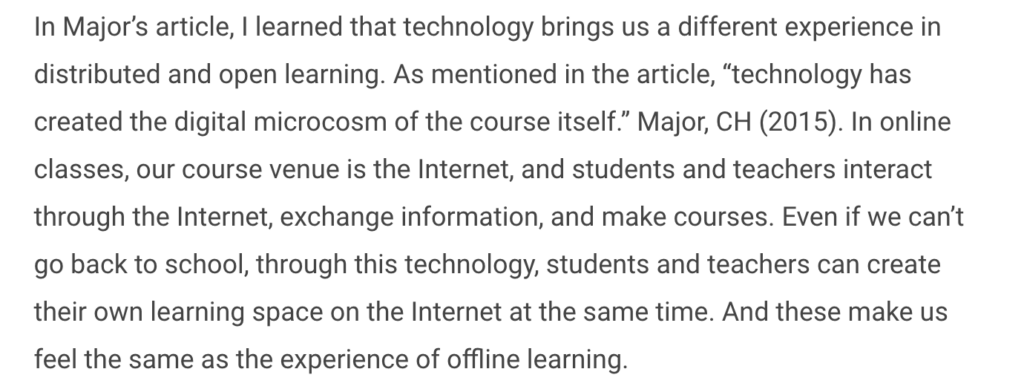
Quote:” an impact on thinking about open practice and online academic activities.”Weller, M. (2017).
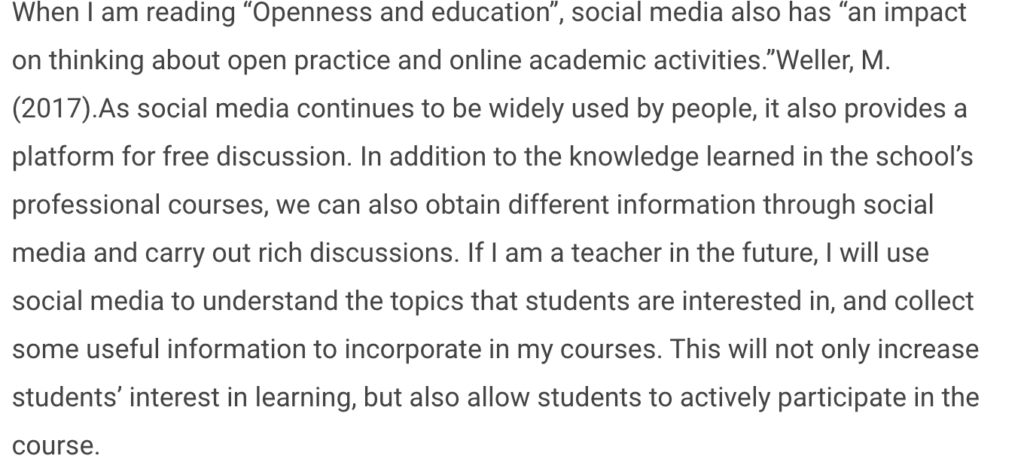
Topic 3 link: https://zhiqingye.opened.ca/topic-3/
Quote: “It can be reused, retained, redistributed, revised and remixed.” Mays, E. (Ed.). (2017).
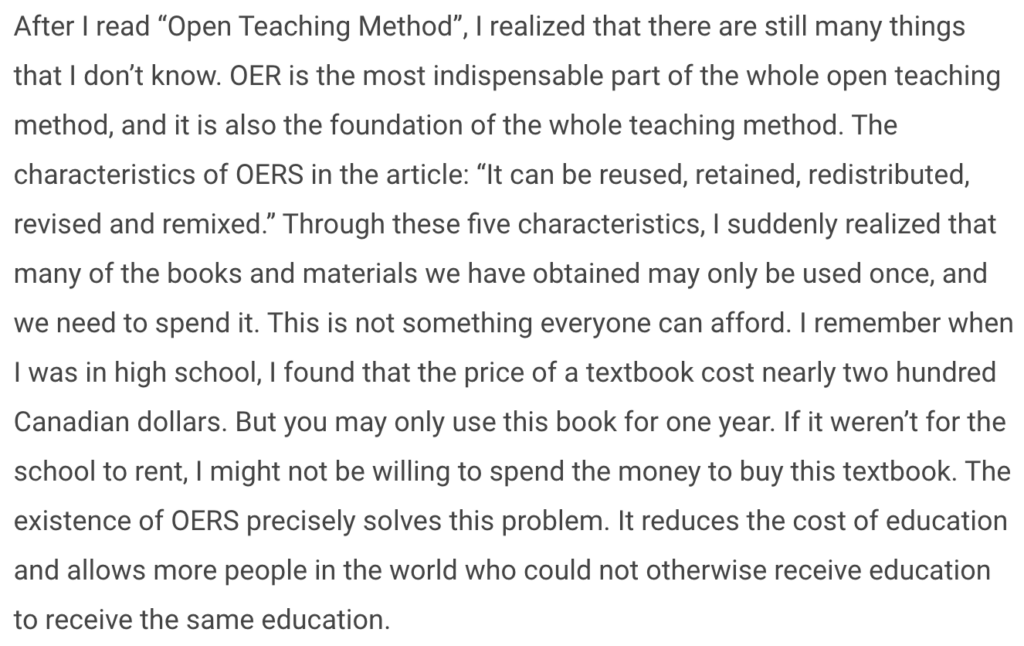
Topic 4 Link: https://zhiqingye.opened.ca/topic-4/
Quote:” Another way that students could generatere sources that would both demonstrate their learning and help future generations of learners is to create summaries of key concepts related to a course.” Wiley, D. & Hilton, J. (2018).
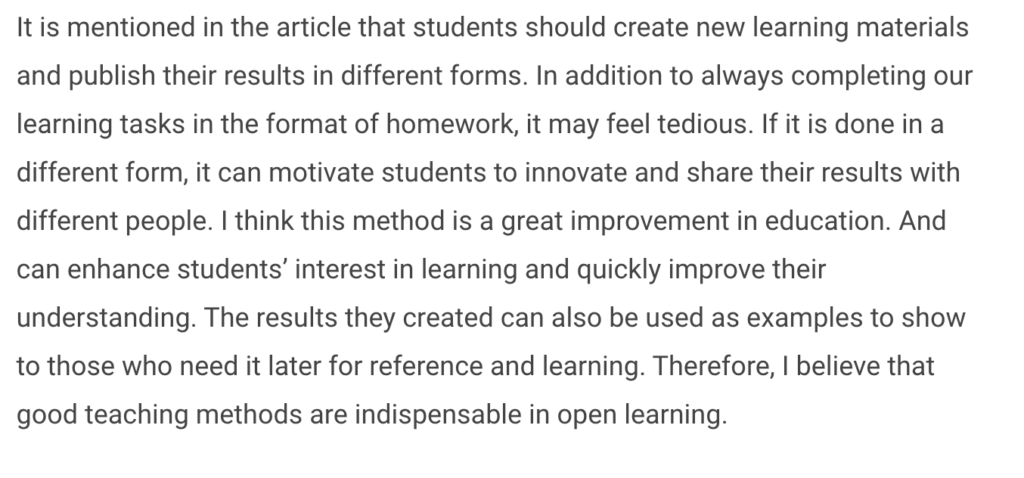
Video Link: https://youtu.be/7hntt2XTijY
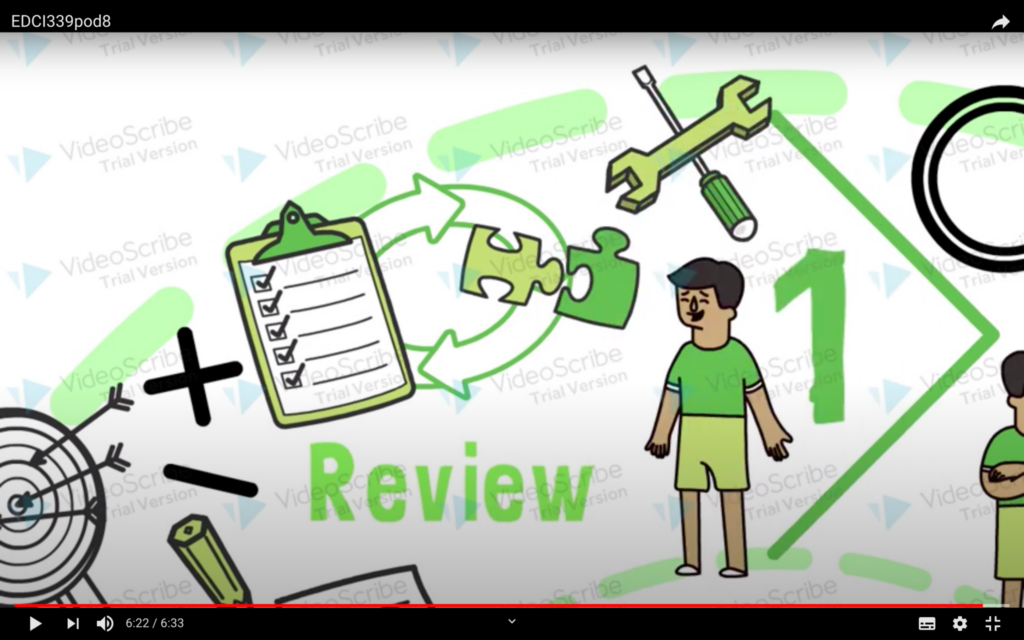
Quotes: “We are never truly “teaching naked”. Major, C. H. (2015).
Comments that I received:

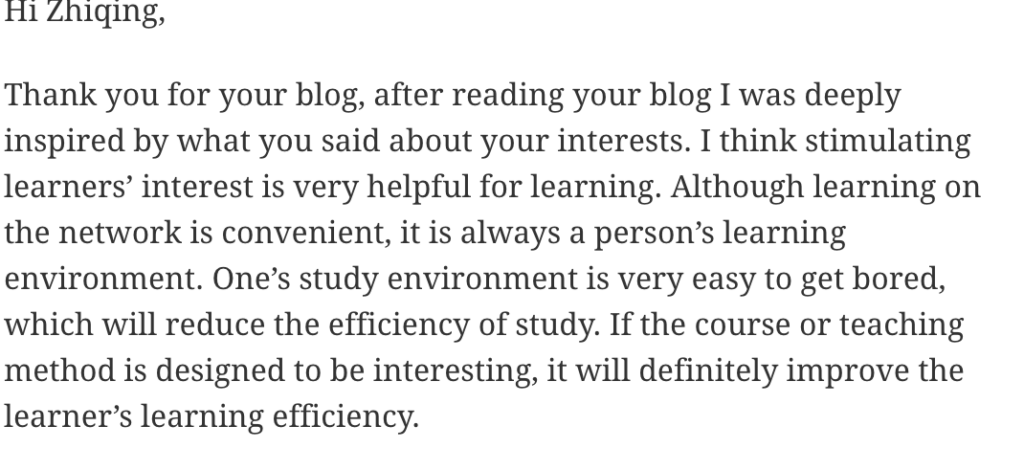

Comments I made:
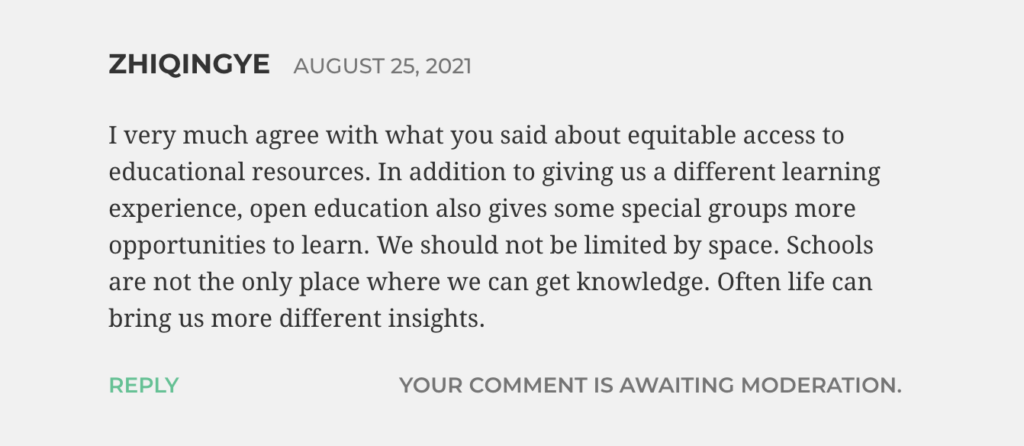
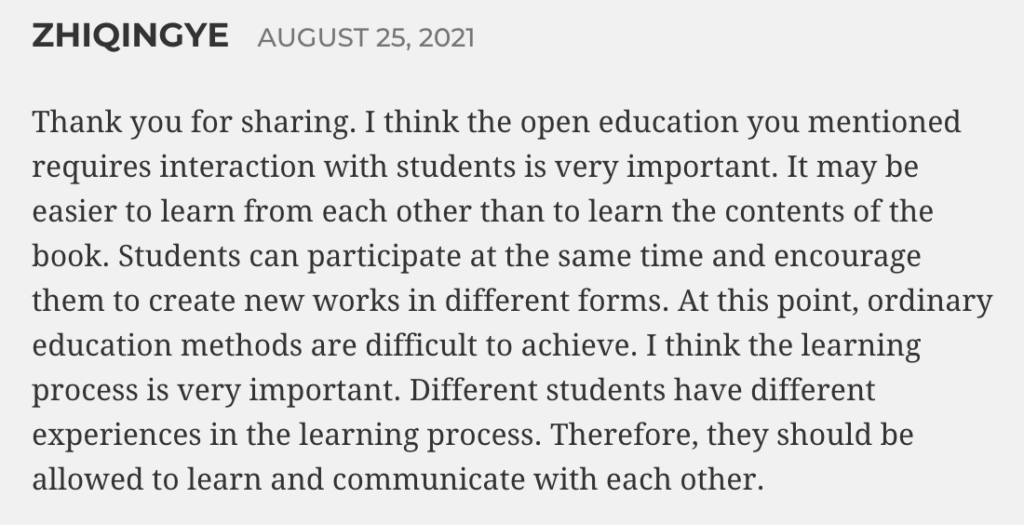
After studying for this month, and after reading so many articles. I learned the importance and diversity of distributed and open education. In fact, in this class, we also exchanged our opinions by commenting on each other’s articles. In the group’s project, we each assigned different tasks, and then communicated together to complete the production of the video. In addition, distributed and open education is particularly important for special groups. These groups may not be able to enjoy the same teaching treatment as ours due to their own reasons or some ethnic reasons. They cannot even afford their own education expenses. Distributed and open education greatly reduces the cost of teaching and gives them more resources and opportunities so that they can easily receive education. The above are the insights I got this month.
Part 2
Updated version of Topic 2: https://zhiqingye.opened.ca/updated-version-of-the-post-topic-2/
Original version of post 2: https://zhiqingye.opened.ca/topic-2/
The reason why I chose to edit topic 2 is that I received a comment from the teacher, and he asked questions about my article. This problem is indeed something I didn’t think of myself. In the article I mentioned that education will also connect with social media. If I am a teacher, how do I choose the information in social media for students to learn from? And how do you ensure that the information is correct? After all, there are many different people in social media, who have different backgrounds and cultures. After all, everyone in social media has the right to freedom of speech. They can boldly publish their opinions on their blogs, maybe some people think this is wrong. As a teacher, I need to strictly screen every piece of information and learn more about the background of the blogger. If the blogger has issues such as racial discrimination, I think this is not suitable for sharing with students. Social media is complex, although both distributed and open education are based on the web. We must learn how to use the Internet correctly. In order to play to their true meaning.
Leave a Reply